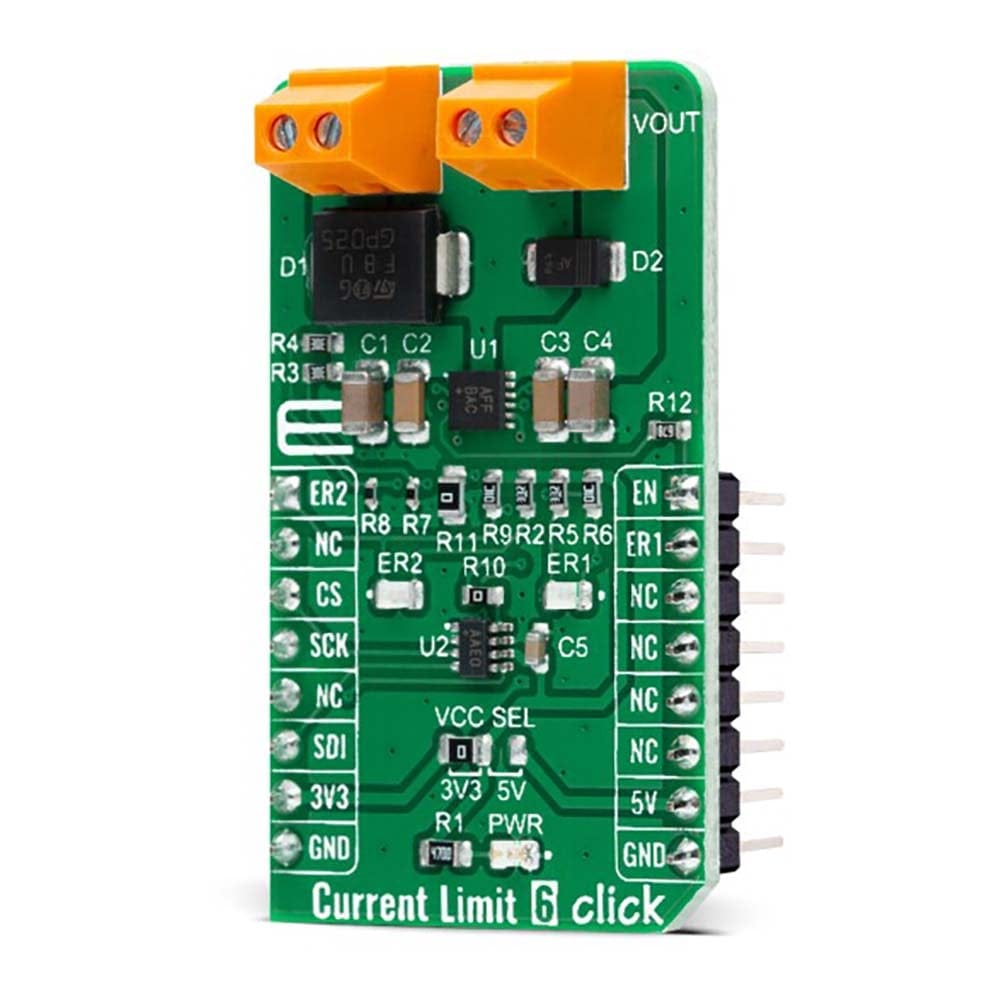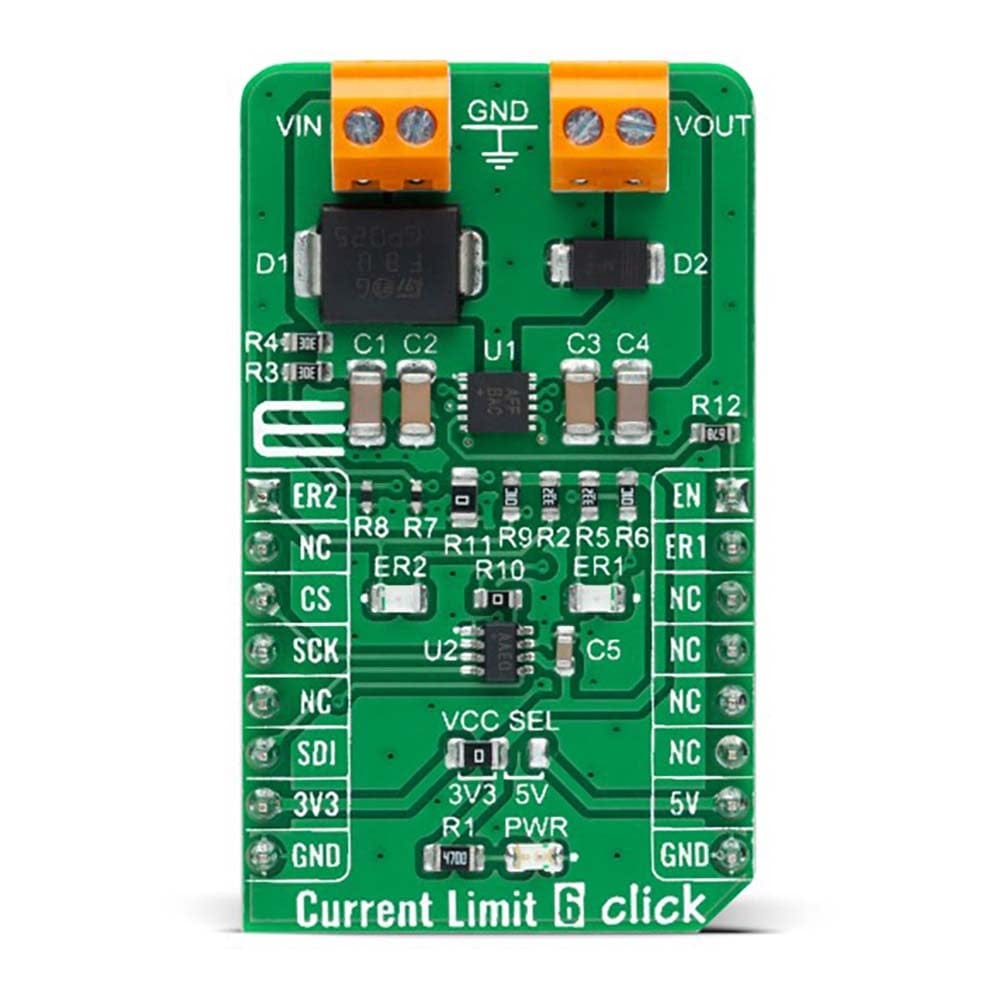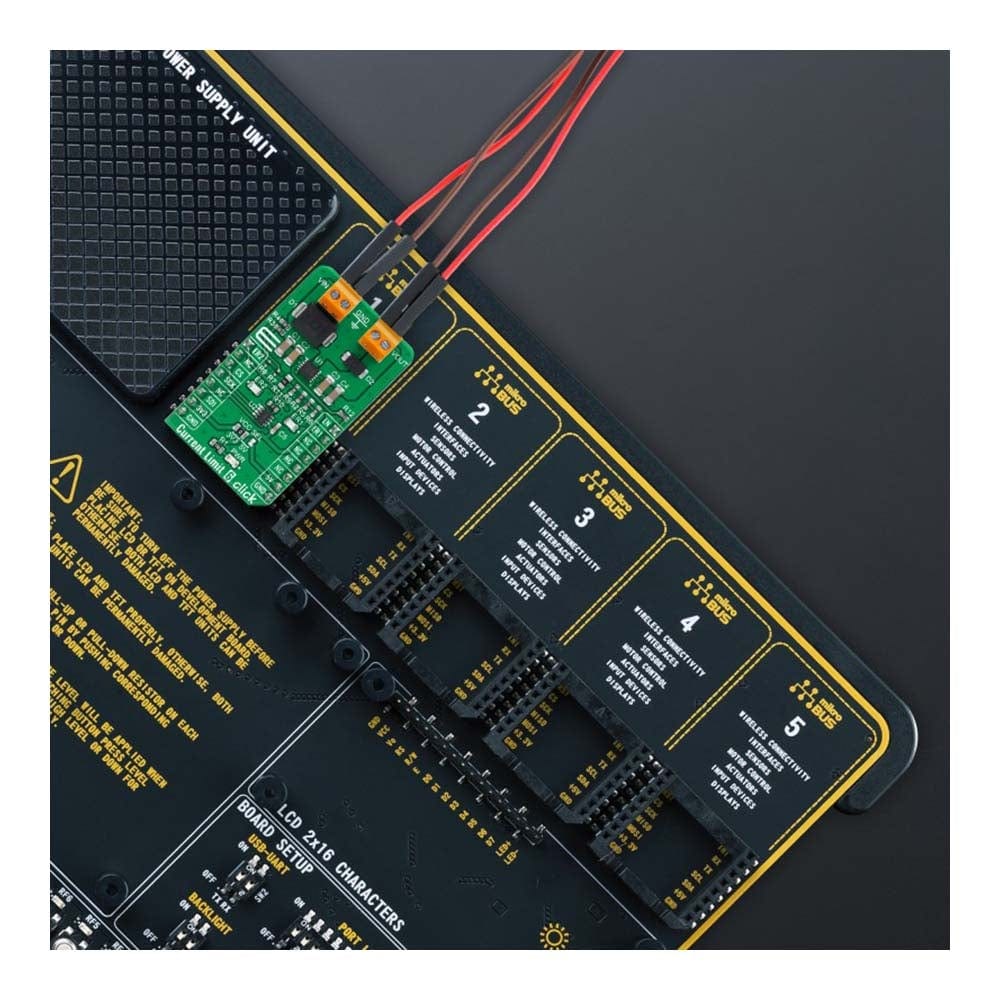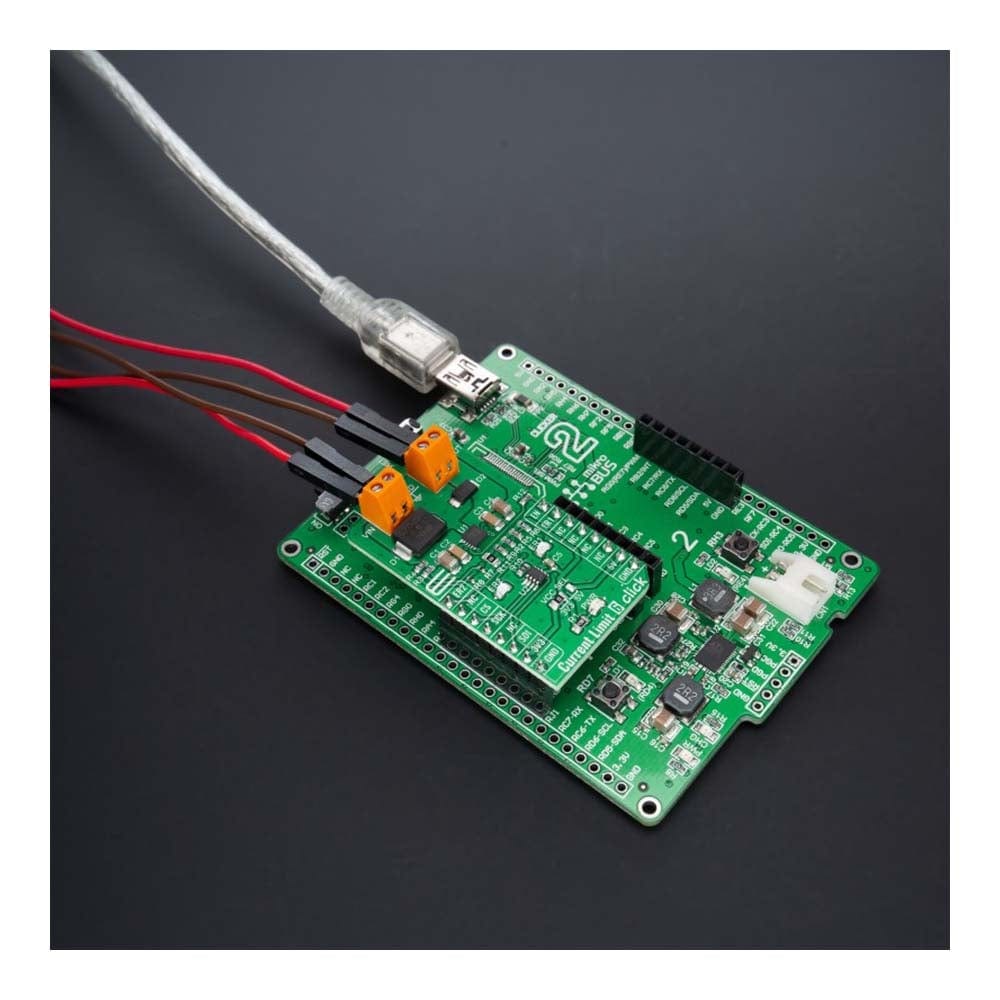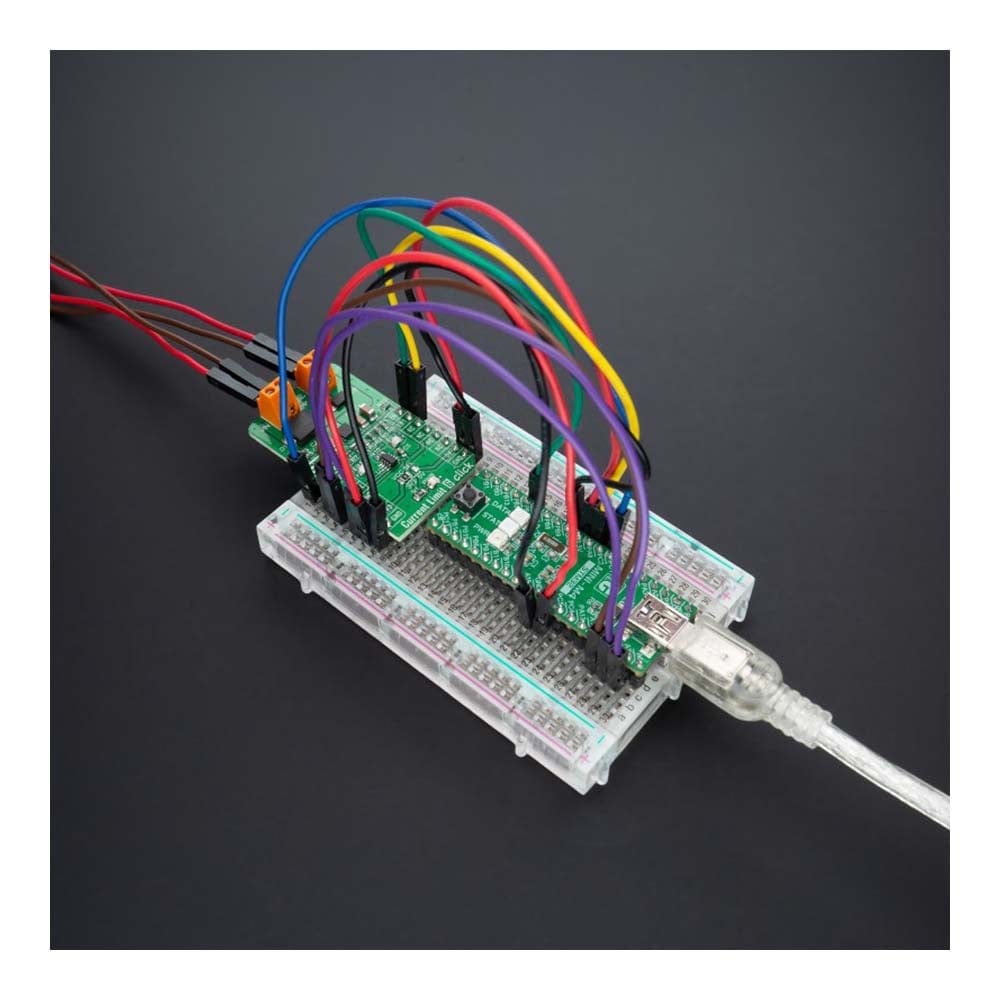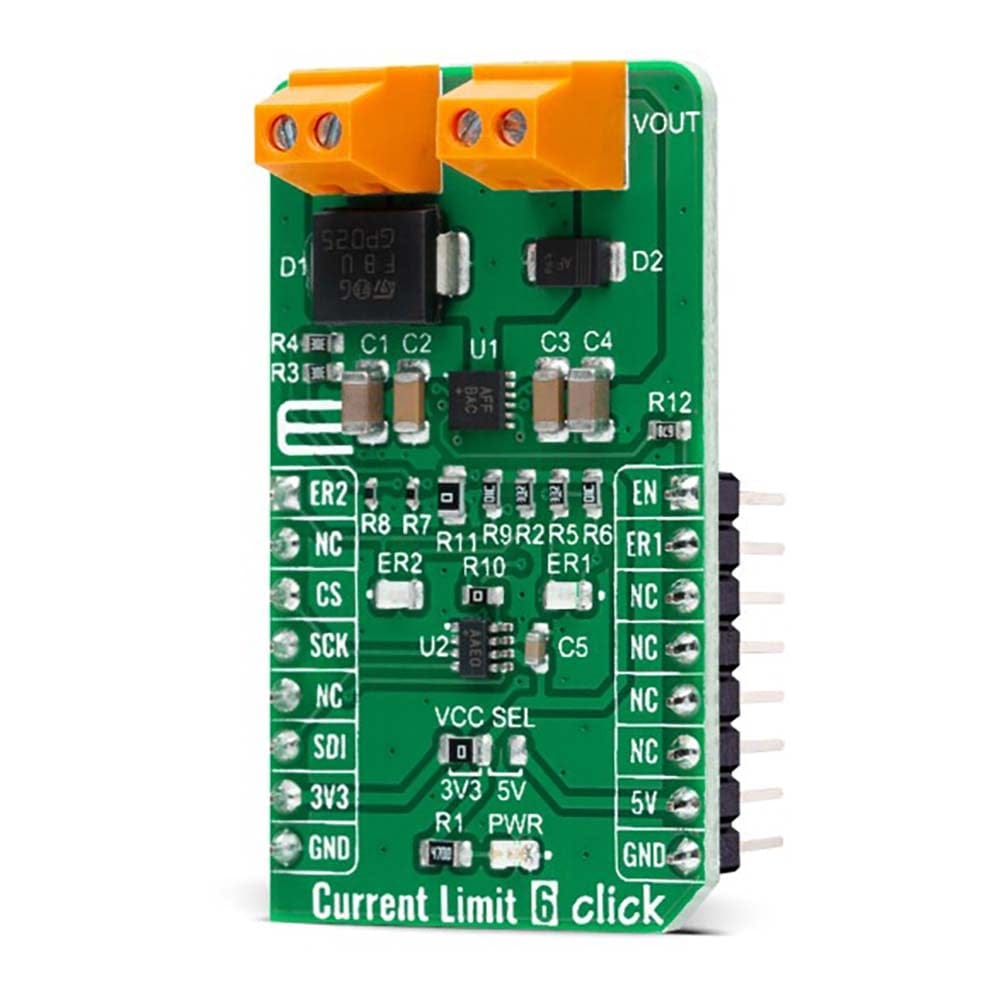
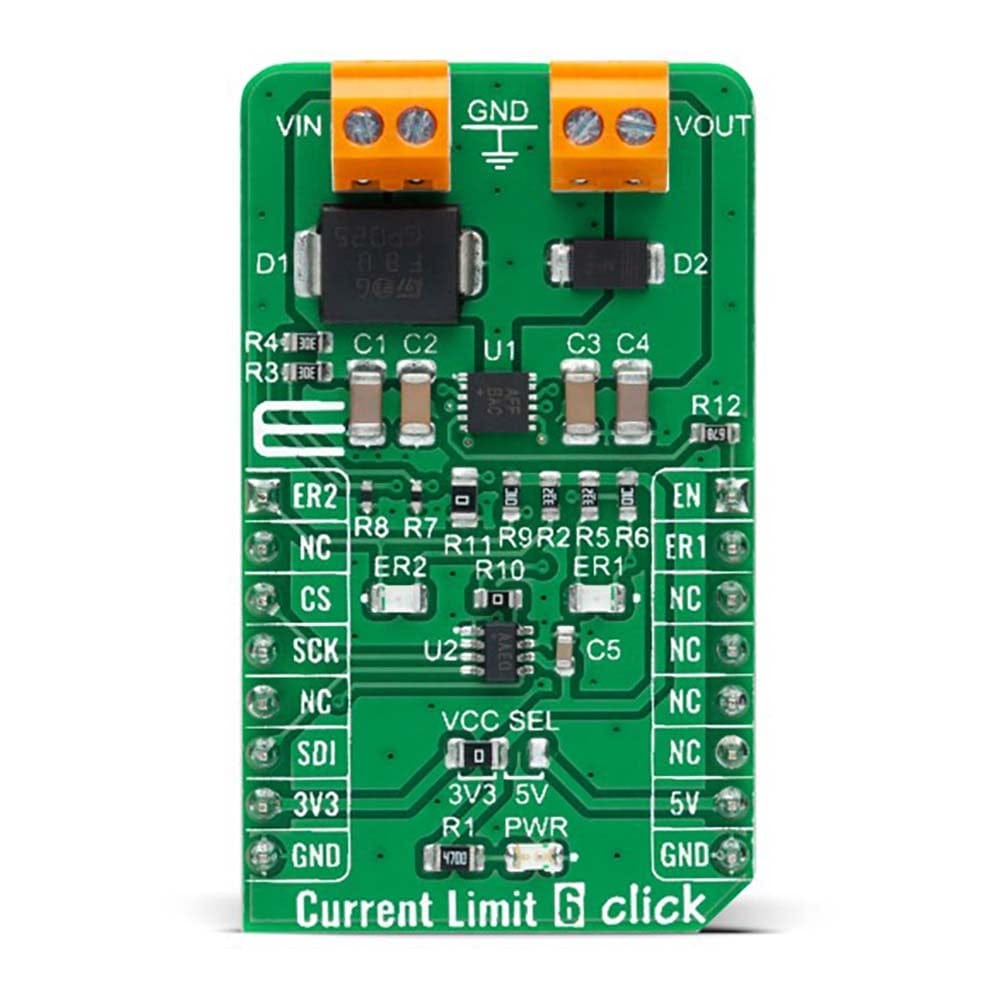
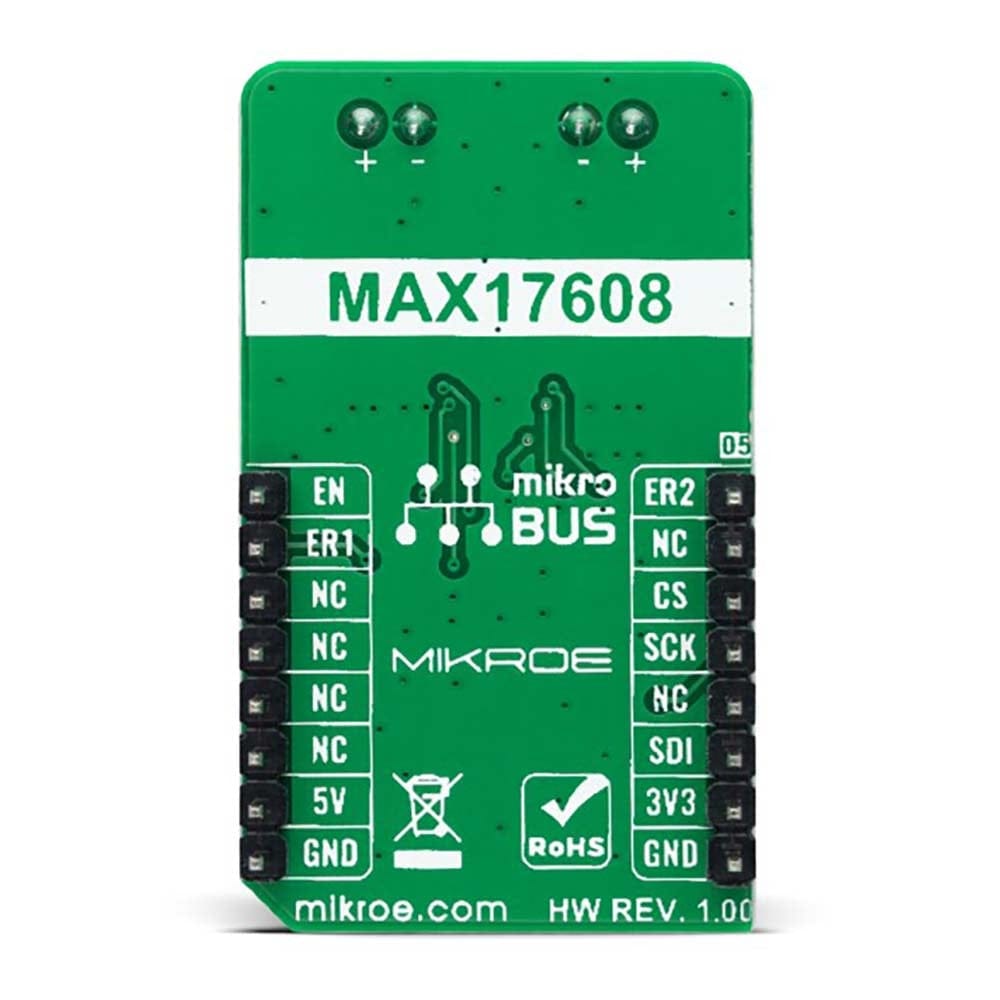
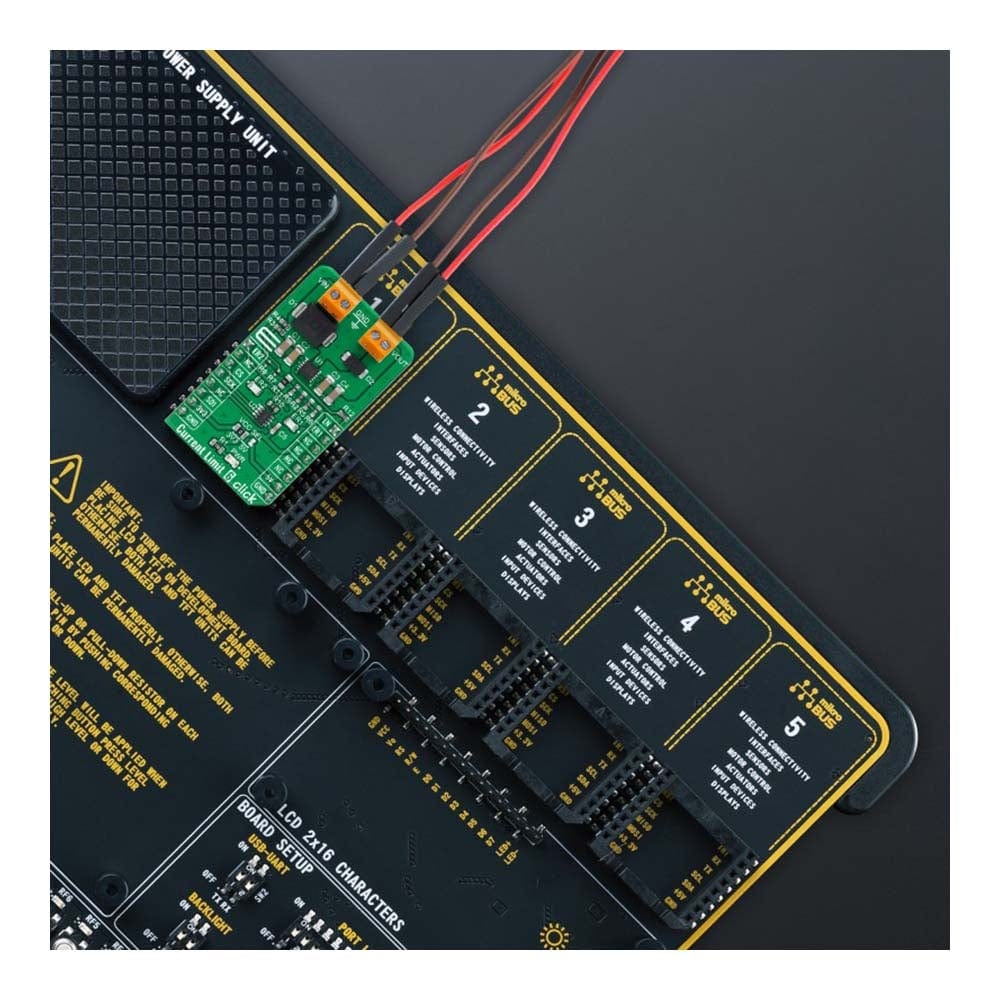
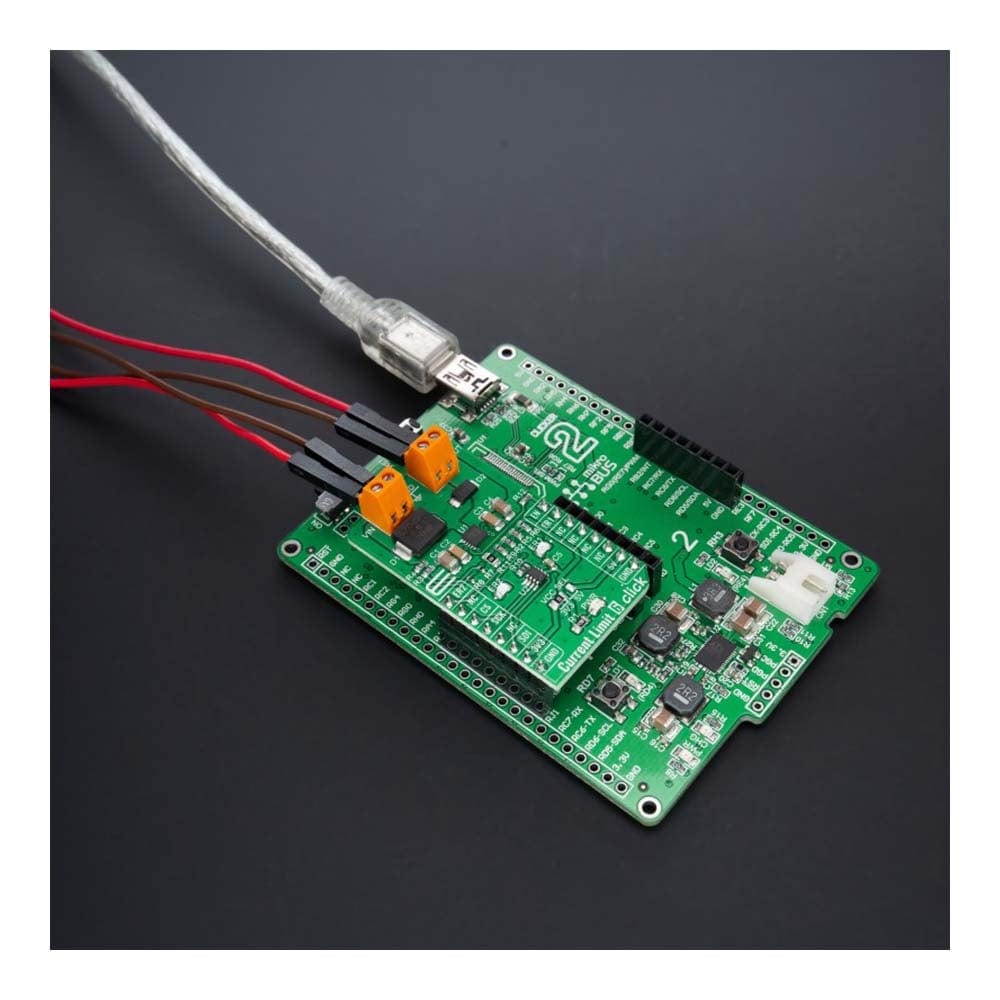
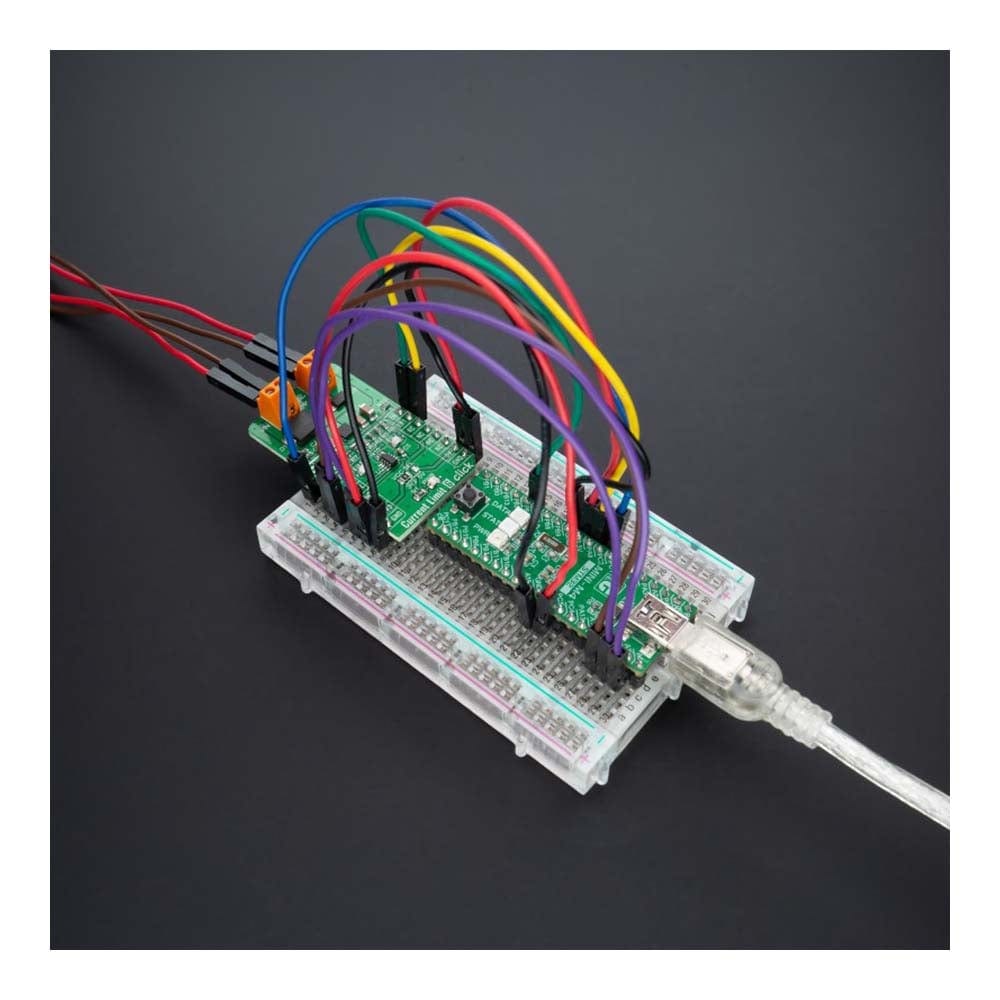
Overview
The Current Limit 6 Click Board™ is a compact add-on board representing a current-limiting solution. This board features the MAX17608, adjustable overvoltage, and overcurrent protection device from Maxim Integrated, now part of Analog Devices. This Click board™ is ideal for protecting systems with the flexible input overvoltage protection range from 4.5V to 60V, and the adjustable input under-voltage protection range is 4.5V to 59V. Also, the maximum current limit is 1A and can be programmed through a digital potentiometer MAX5401. When the device current reaches the programmed threshold, the device prevents further current increases by modulating the FET resistance.
The Current Limit 6 Click Board™ is suitable for applications in portable equipment, process instrumentation, and condition monitoring, or with power supplies, protecting them in a short circuit or other overload conditions.
Downloads
La carte Click Board™ Current Limit 6 est une carte complémentaire compacte représentant une solution de limitation de courant. Cette carte est équipée du dispositif de protection réglable contre les surtensions et les surintensités MAX17608 de Maxim Integrated, qui fait désormais partie d'Analog Devices. Cette carte Click Board™ est idéale pour protéger les systèmes avec une plage de protection flexible contre les surtensions d'entrée de 4,5 V à 60 V et une plage de protection réglable contre les sous-tensions d'entrée de 4,5 V à 59 V. De plus, la limite de courant maximale est de 1 A et peut être programmée via un potentiomètre numérique MAX5401. Lorsque le courant de l'appareil atteint le seuil programmé, l'appareil empêche toute augmentation supplémentaire du courant en modulant la résistance du FET.
Le Current Limit 6 Click Board™ convient aux applications dans les équipements portables, l'instrumentation de processus et la surveillance de l'état, ou avec des alimentations électriques, les protégeant en cas de court-circuit ou d'autres conditions de surcharge.
| General Information | |
|---|---|
Part Number (SKU) |
MIKROE-4915
|
Manufacturer |
|
| Physical and Mechanical | |
Weight |
0.02 kg
|
| Other | |
Country of Origin |
|
HS Code Customs Tariff code
|
|
EAN |
8606027389849
|
Warranty |
|
Frequently Asked Questions
Have a Question?
Be the first to ask a question about this.

